I hope supporters enjoyed this victory over France. The reaction afterwards seemed to focus on why Ireland only came away with a solitary try, but a record Six Nations winning margin in the fixture deserves a little more appreciation.
This game was primarily about keeping championship aspirations alive.
The coach delivered. Joe Schmidt identified where gaps would appear in the French defence. A few more tries were denied by a combination of inaccuracy and the conditions conspiring to stop Ireland delivering, in full, the intended plan.
To get a bonus point against this French defence - who did the opposite to Italy at Twickenham by committing extra numbers to the breakdown - would have required a flawless attacking display on a dry track.
Drizzly days are the worst to find any rhythm. And who's to say France would not have cut loose on a few occasions as well? If not for Conor Murray's tackle on Scott Spedding, this could have been a very different result.
Murray’s phenomenal game management is what this performance will be remembered for, but his essential covering behind the defensive line and crucial tackles arguably had more impact on the outcome.
On 65 minutes Ireland were leading 16-6 but the game had opened up as France, throwing offloads at every opportunity, went for the jugular.
CJ Stander and Garry Ringrose - who both made sustained impacts over the 80 minutes - pressurised Camille Lopez into a fumble. Johnny Sexton dived on it. Iain Henderson played scrumhalf, feeding Simon Zebo who grubbered the ball into French territory.
Spedding immediately countered, drawing two defenders, before passing to Noa Nakaitaci, who offloaded out of a double tackle by Zebo and Sexton.
This was the moment we all feared. Spedding took the return pass and was sprinting clear until Murray arrived to chop him down. At the very least an offload to Henry Chavancy had France back in the fight at 16-13, which would have been a huge momentum shift, but Murray's tackle snuffed out the danger.
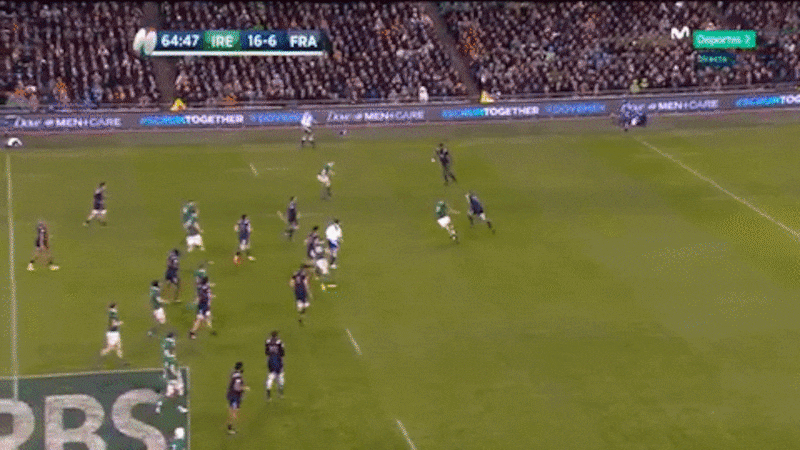
If France scored at that moment, after being comprehensively out played, it would have felt like a knife through the heart of Ireland’s title aspirations. We have seen this happen before against them.
In the end Ireland secured an impressive victory but, looking down from our commentary nest, I felt there could have been more joy to be had by going through a few more phases. Even though the kicking accuracy of Murray and Sexton kept the big French pack turning back into their 22 (that drains the mind as much as the legs), I saw a clear shape to Ireland’s attack.
The interplay between two Irish forwards standing off the ruck - in the below instance it is Tadhg Furlong to Seanie O'Brien - before quick distribution had Sexton running into an area Schmidt had clearly signalled as a chink in France's defensive line.
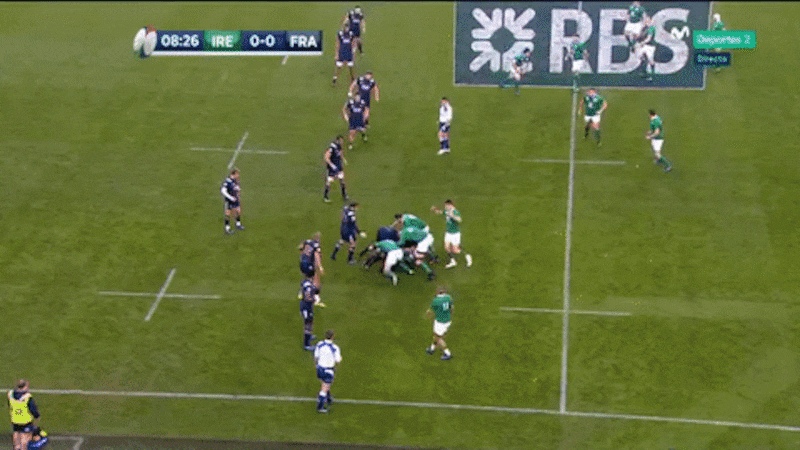
Attacking in rugby nowadays is all about deception. That flat transfer from one forward to the other drew the eye line of French defenders and their shoulders naturally turned inwards, so the quick pass out the back to Johnny meant they were wrong footed.
The intention was to hurt France out wide but inaccuracy, and the absence of another outside back, let Ireland down. Still, they kept using the ploy, trusting it would give Johnny the space needed to create the scoring opportunity.
On 35 minutes Louis Picamoles - as he did against Scotland - snuffed out the same attack with a man and ball hit on Dev Toner after a quick pass by Jack McGrath.
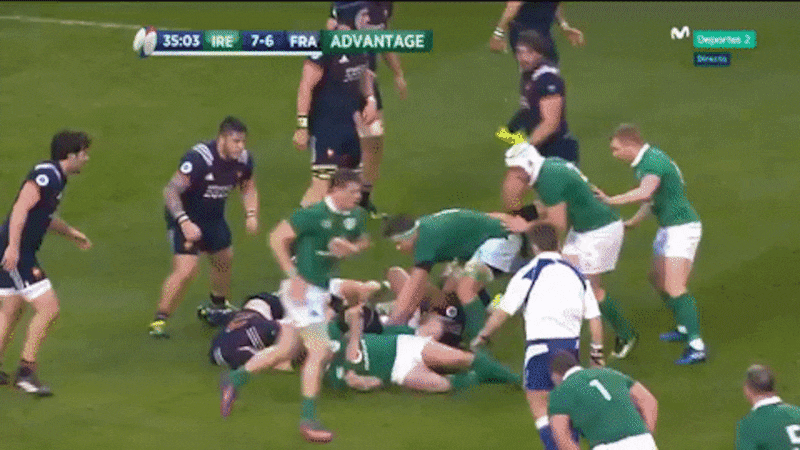
In that instance France were there for the taking, with 13 players inside the post where Ireland attacked from, while Ringrose and Zebo were in the wide channel against an isolated Nakaitaci. It was a brilliant read by Picamoles.
Plan A was to deceive the French then fire quick ball to the edges. It didn't work but Plan B still yielded points as Nigel Owens went back for a penalty advantage as Sebastien Vahaamahina had stooped to tackle Ringrose around the neck.
That was the story of the game really; Ireland almost created try scoring opportunities but a greasy pill meant scores were best sourced from constant pressure, which resulted in penalties, allowing Johnny and eventually Paddy to close out the game.
Bloodless, maybe, yet highly attritional. This fortnight of recovery is essential.
Ireland also sought to isolate French forwards by holding ball for long periods, 64 per cent possession, but more importantly playing deep in their territory for an astonishing 68 per cent of time the ball was in play (stats: Accenture).
Vahaamahina was the primary target, looking shattered in midfield well before half-time alongside the front rowers, and Ireland also attacked the pillars either side of the ruck.
Neither ploy yielded a second or third try but the intent was encouraging to see.
That’s enough to ensure confidence builds with plenty of room for improvement before Friday week in Cardiff.
That the end game lacked the excitement of other encounters with France shows how well Ireland - minus those moments in Murrayfield - are currently functioning as a collective unit.
The players can prepare in a good head space in Carton over the next week. Same cannot be said about Wales in the Vale of Glamorgan.
Scotland - well, Finn Russell and Stuart Hogg as Ireland also learned to their cost - showed how to open them up.
Also, how do you deal with Sam Warburton and Justin Tipuric? Make them tackle so they can't slow down our possession. If both flankers are on their feet, Wales are dangerous and the speed to rucks becomes incredibly important.
So, while much of Saturday's credit went to Sexton and Murray - and his form is nearing Chicago standards - any talented halfback should look this good when the team delivers quick ball. The low body, torpedo entries into rucks were textbook and also allowed Robbie Henshaw make the hard yards at first receiver (Robbie's presentation of the ball is fantastic).
Or for Murray to attack himself, like when the maul stalled on 21 minutes. This was created by Rory Best’s pack forcing extra French bodies into the drive.
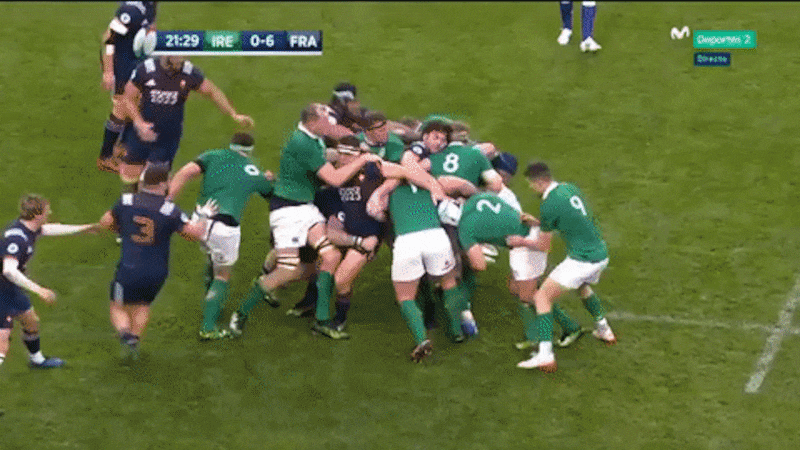
Sexton and Murray deserve enormous credit for creating and finishing the solitary try but it was only possible due to Ringrose’s brilliant hands in midfield - complimented by Gael Fickou’s naivety - and Seanie O’Brien’s unseen work at the resulting scrum.
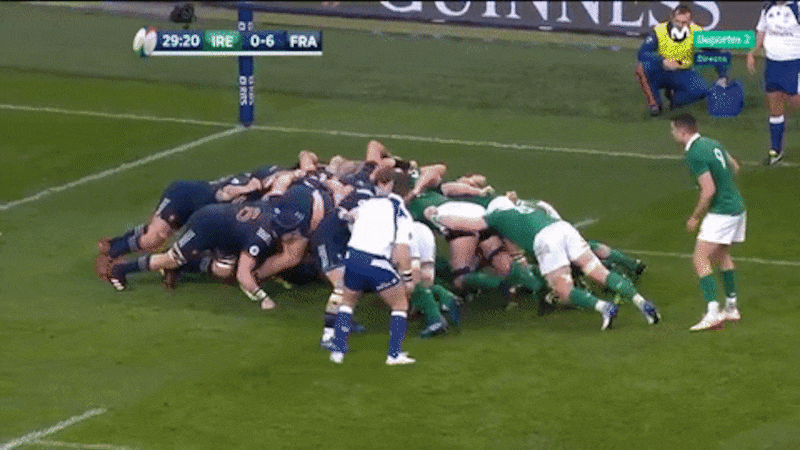
Yes, there was a variation of the Sexton wrap around to get Ireland into the scoring position but this required three perfectly timed decoy runners. All the pieces matter now.
Then, at the scrum, Seanie did just enough to distract Bernard Le Roux from his primary duties: getting over the ball that Henshaw carried and being in the precise position to deny Murray diving over.
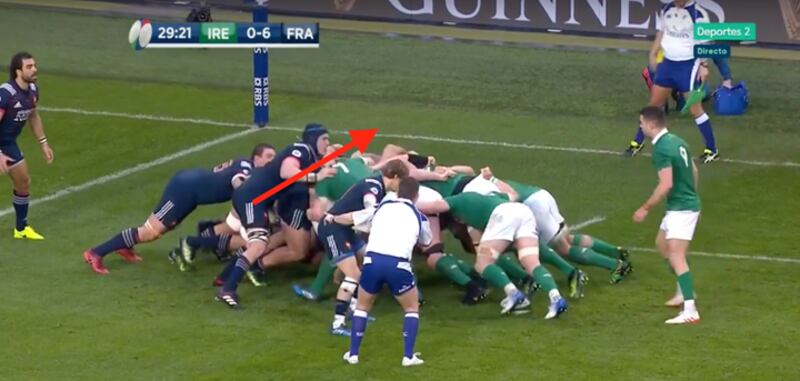
Le Roux broke his bind first, clearly focussed on Murray, but had he showed more discipline and scrummed, or at least bound properly, then if Seanie did anything it was a French penalty.
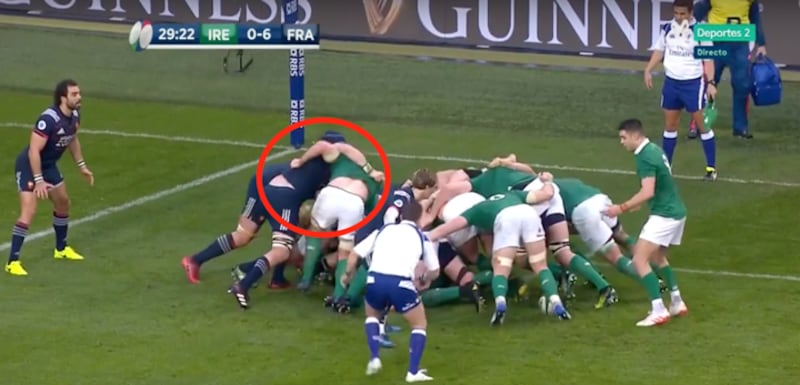
That's experience. O'Brien is so well marked around the pitch so while not making the same impact as Stander - a freakish 69 carries for 161 metres in three matches - he's still ploughing through a huge amount of largely unseen work. Seanie holds Le Roux long enough for the French flanker to be a step off the pace yet not long enough to endanger a reverse penalty. Ringrose and Seanie brilliantly clear out Baptiste Serin and Le Roux to allow Murray power over (Heaslip's ball control at the scrum and subtle obstructions also deserve a mention).
Of course, Sexton and Murray brought Ireland’s standard up to a level that has them believing they can beat any team. But everyone is contributing now.
The attritional nature of this game could not be avoided. By any of them.
Johnny does worry some people with the way he throws himself into rucks. Not me. That is why his teammates want to play for him. The question I would ask is, was he the correct person to be hitting those rucks?
But everyone has to ruck at some stage. That’s what this Ireland team is all about.
It’s what any decent team lives and dies by. Could Johnny have avoided one or two entries into rucks? Possibly, simply on the basis that no defensive pattern is designed to have your 10 underneath a pile of bodies.
But the closest pair to any breakdown must clear the debris. That is as fundamental a part of rugby as catching and passing. Is Johnny the right person to hit a particular ruck? If the answers is no then it needs to be asked why another player wasn’t there?
Because Johnny does seek contact. He’s a rugby player. If you want of throw your shoulder into an opponent, go for it. That’s one of the benefits of playing contact sport!
It only gets tougher for Sexton and everyone else in these last two rounds. But the control, the calmness to do the right thing, when needed most, is what makes Ireland such a difficult beast to tame.
Wales are not like that at all at the moment. But winning in Cardiff has never been just about a cohesive performance. So much more is needed. England showed that.
Reacting to what transpires over the course of 80 minutes is how the next victory comes. Ireland have shown they can do that.













